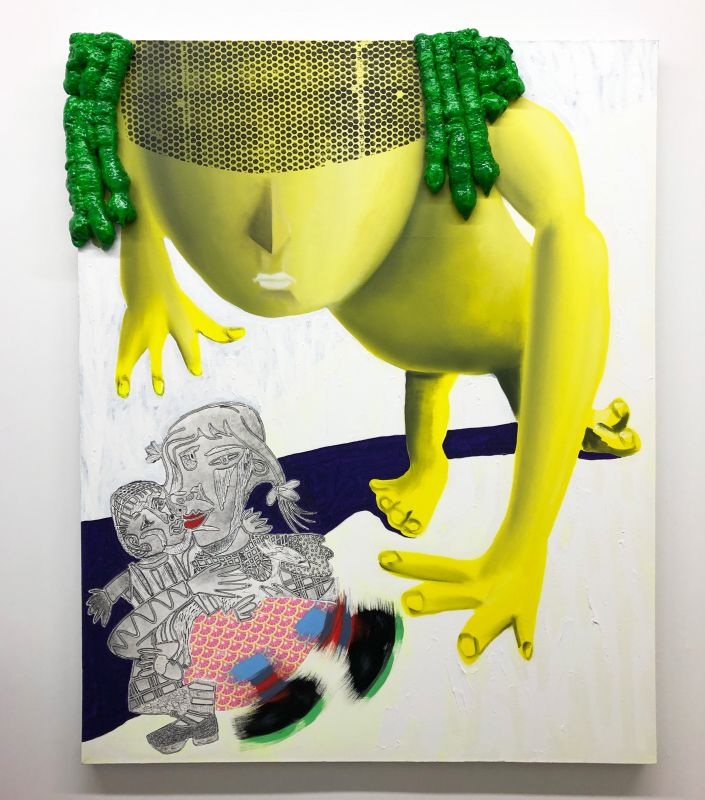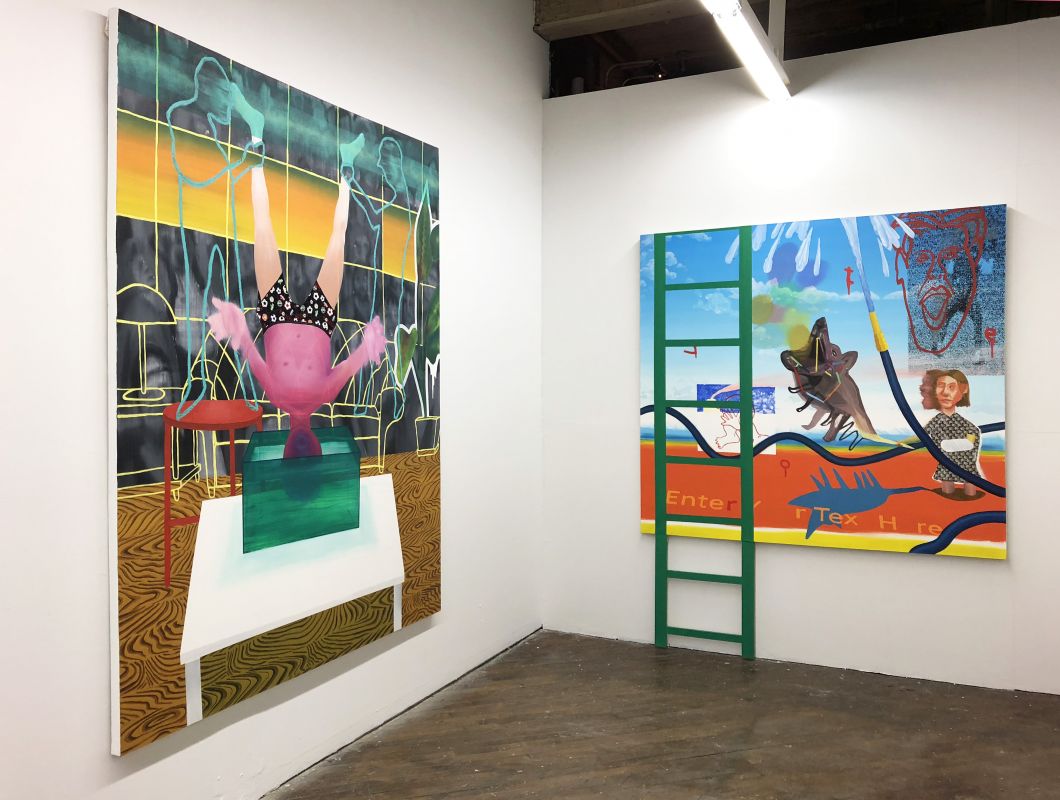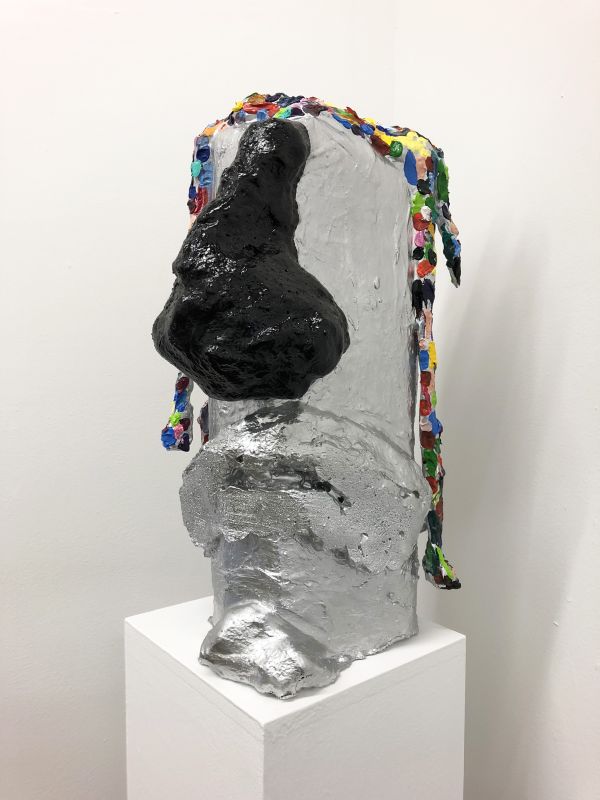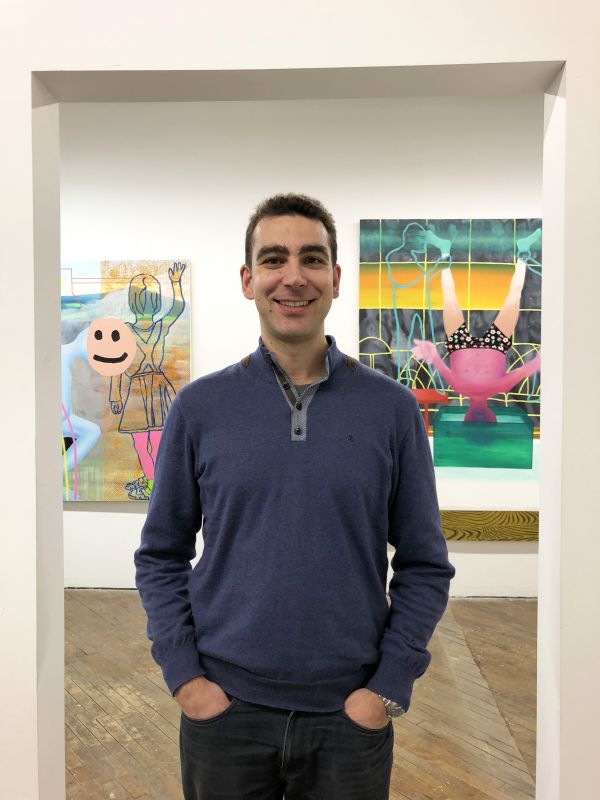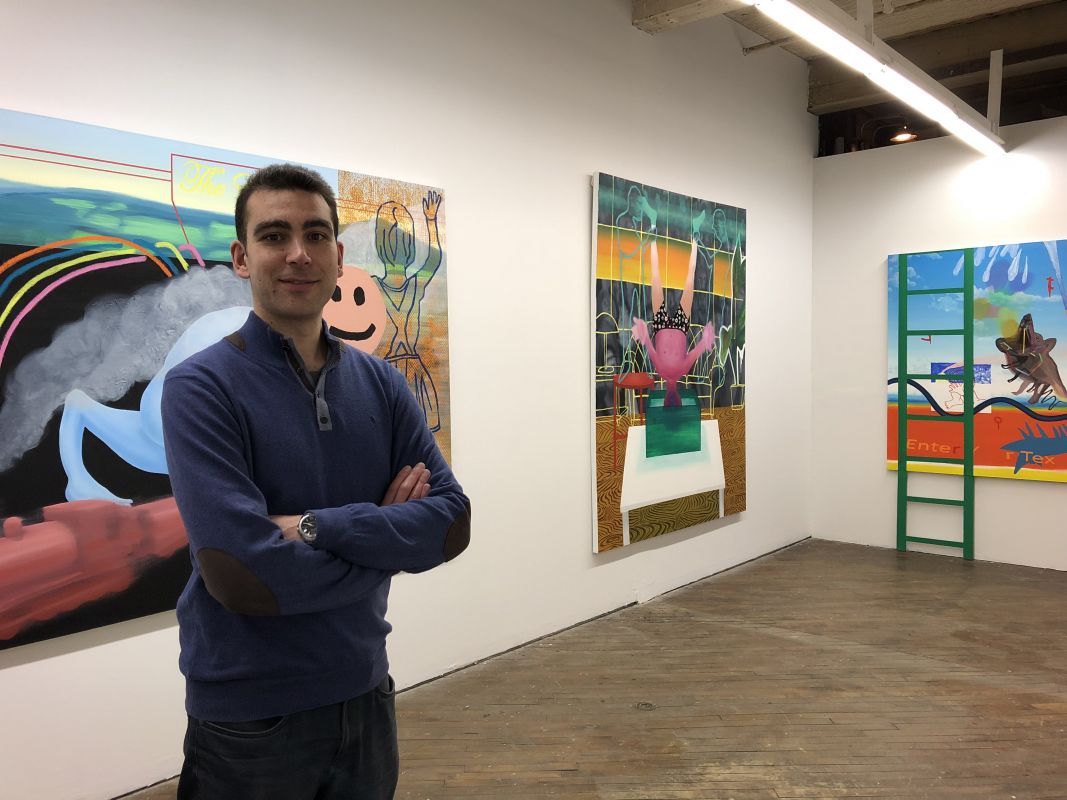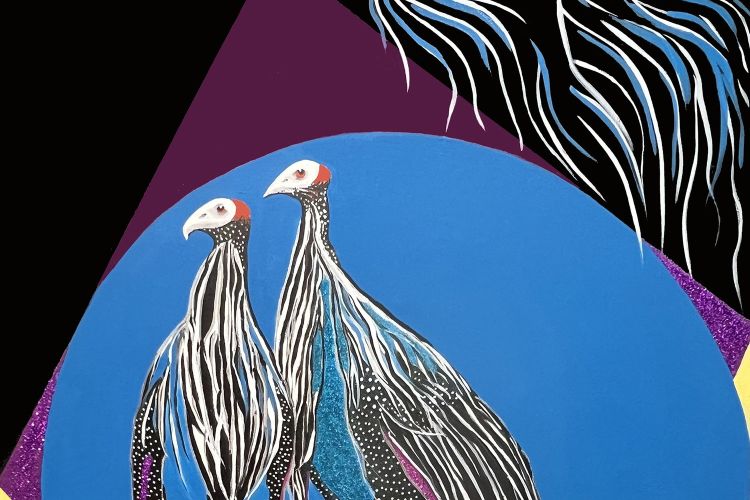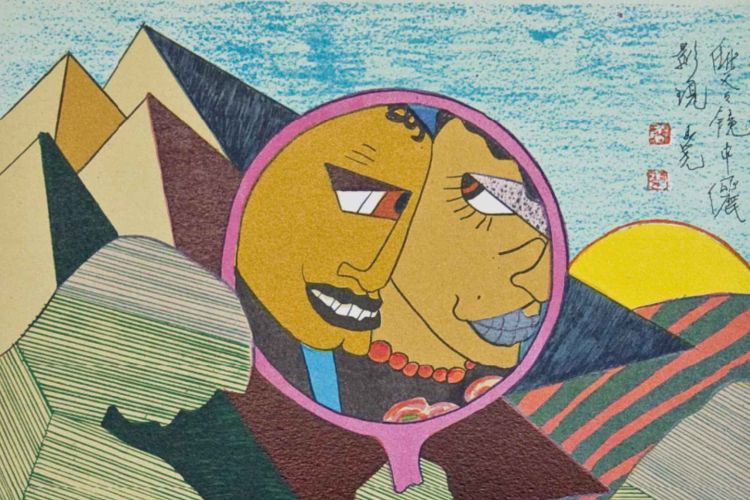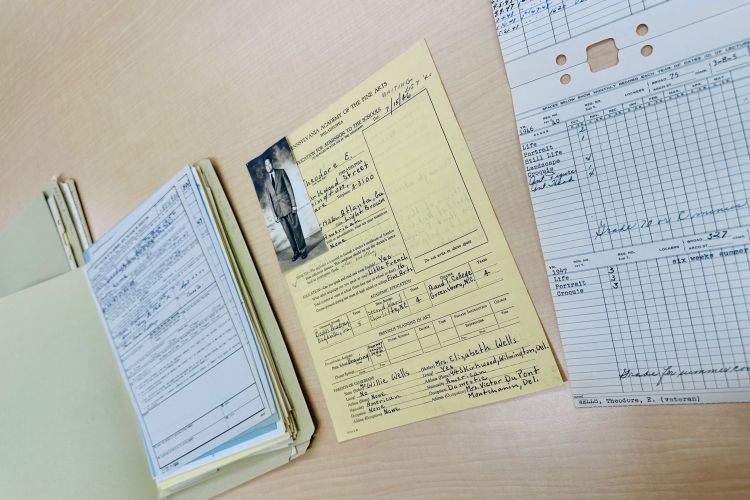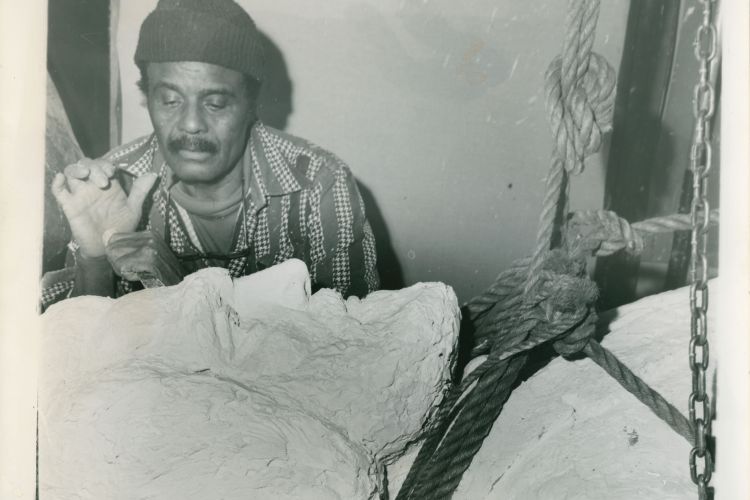STORIES FROM PAFA
Josias Figueirido
Josias Figueirido (MFA ’17) is a native of Spain, where he grew up in a small fishing town on the northwest coast. As a kid, he was always interested in drawing, even though he didn’t know any artists in his small town. He first considered studying psychology or sociology in university, but then realized art could also be an important way of observing the world. His pursuit of training eventually led him to London, where he attended London Metropolitan University followed by a one-year course at The Royal Academy of London.
Upon graduating from PAFA this past May, Figueirido started teaching at The Print Center in Philadelphia in the Teaching Artist Residency program and at Fleisher Art Memorial, teaching teenagers from the community. Currently, he is starting his semester at the Pennsylvania College of Art and Design in Lancaster, PA as an adjunct instructor, teaching classes in Painting and 2D Design. Figueirido also presented a solo show at local gallery Marginal Utility this winter. His large figurative paintings and sculpture filled the two rooms of the gallery, creating a vibrant backdrop for our conversation.
Tell me about your time in London. What was your training like there?
After my studies at London Met, I went to do a one-year course in drawing at The Royal Academy of London. That program took us everywhere in the city. We drew at the opera, we drew in restaurants, we drew from movies, we drew in the park, we drew everywhere in the city. I thought that was great. In that moment for me, art practice became looking at the world around me and just responding to it.
Studying fine arts was never as I imagined it. I thought it would be a continuation of my drawing practice. The teaching I received was very conceptual, so drawing from observation was completely removed from the syllabus. All my professors came from the Young British Artists [movement], so their whole teaching philosophy was “Look out the window and meditate.” I spent almost 8 years in London. It was very hard, but very wonderful at the same time. One thing I really appreciated about having no direction whatsoever was that is really challenged my thinking about what I was making. It helped me see what I really wanted. It gave me independence.
What led you to PAFA and how did you make the decision to enter the MFA program?
I came to live in the US in this area, where my wife is from. I was living near Philadelphia, and was looking at different schools. PAFA was the one I was most interested in because it seemed to me the work made by student was very diverse. It seemed there was not an agenda, and you could do whatever you wanted, and I really liked that. I saw the faculty work, and I saw how different it was from each other. I thought it would be interesting to work in such a diverse environment.
How do you feel being involved with PAFA has impacted your trajectory as an artist?
PAFA was an opportunity to look into a lot of contemporary art, and to just really think about what my interests are conceptually. And also a time to explore and investigate painting. For me, it was basically about painting. What can I do with painting? What about ways of applying paint, mark-making? And making friends. Even classmates who I didn’t relate at all do, I think did influence me.
For me, basically, PAFA challenged me about was it meant to be a professional artist. PAFA gave me another level. PAFA gave me a professionalism that I didn’t have. It made me want to be competitive. It taught me that when I go to MOMA, when I go to the Whitney, I have to think about how to put my work here. I have to say being close to New York City has been very important to me. When I go to Chelsea, I think how do I bring my work here? It’s not a matter of thinking that I’m good enough, but it’s my responsibility as an artist to a part of the conversation that is happening. It’s my responsibility to be in the places that have a say in the art world. It gave me a healthy ambition, because I really feel responsible to do my best.
How would you describe your work, either in medium or content?
In terms of content, I always enjoy looking at the world and making sense of it. I’m very interested in what are the psychological or intellectual moods of a certain generation. What are the ideas that are shaping a culture? What are the ideas that we all embody because we live in a specific place, and how do they shape us? I’m interested in questions of truth and uncertainty, and living with contradiction. When I come to my studio, I bring these ideas to my work. I believe those ideas are somehow embedded in my work, and the kind of imagery I use. They somehow play a role in the kinds of narrative I compose.
What do you think artists have to offer the greater culture at large in this point in history?
I think artists make work for different reasons, purposes, and functions that are all legitimate and that contribute in one way or another to the wellbeing and enrichment of a culture. But perhaps today more than ever before, art offers a place for reflection and provides a platform for opening dialogues about matters that are pertinent to our culture. The world is an intellectually and ideological diverse place, where different views and perspectives are available, and where some overshadow others. I think art provides a space for ideological diversity, and diversity opens up the opportunity for dialogue, and perhaps dialogue can bring change when change is needed. I cannot think of a better context for contrary views to be discussed and debated.
What was it like having a solo show so soon after graduation?
Just having the opportunity to have a show is very helpful because you have something to work towards. I’m always making work, but to be offered an opportunity to show is an extra dosage of encouragement, and it makes you go to the studio and work harder. All the work I have in the show was done in two months, but that would never happen if I wasn’t given a deadline. Also having a solo show gives you an opportunity to not just think about the specific works but also to think about your work as a whole. A lot of the curatorial decisions happen in the space, but when you’re in the studio you’re also making a lot of decisions about how the works relate to each other.
How has teaching impacted you?
In order to learn, the best thing you can do is teach. You have to know how to communicate these ideas very clearly. For the painting class at the Pennsylvania College of Art and Design I just started in January, I was free to make my own syllabus. That was very challenging, but it made me look at the artists I wanted to include and the artists I wanted to look at. And that made me do a lot of research that I wouldn’t have been doing if I haven’t had to teach. Teaching makes me more informed about the art world. I really feel very responsible for the students, in giving them a good education. I have to be always researching what’s going on in painting, what shows are doing on, so I can tell them to do see this show in New York or read this article.
